“Hypoallergenic Companions: Medium Dog Breeds That Won’t Leave Fur Behind”
** Introduction **
Are you dreaming of a furry friend but worried about hair all over your house? you’re not alone! Many potential pet owners love dogs but fear the constant dog shedding. Thankfully, there are plenty of medium-sized dog breeds that don’t shed hair, offering the perfect solution. These breeds not only keep your home clean but are also less likely to cause allergies, making them great for both families and individuals.
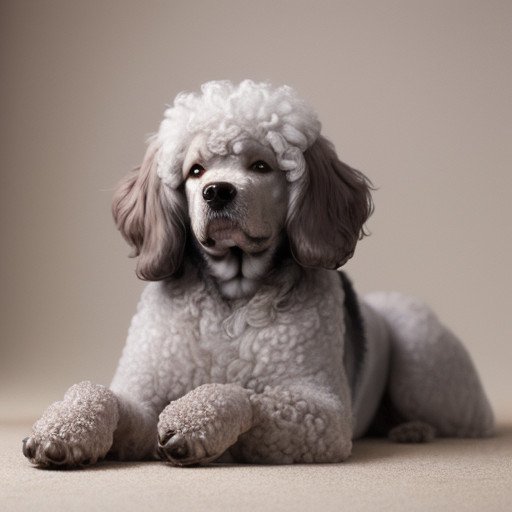
Table of Contents
Imagine enjoying all the benefits of having a loyal, playful companion without the hassle of constant vacuuming. From the curly-haired Poodle to the charming Portuguese Water Dog, these breeds bring joy without excess fur. Each breed has its own unique traits and personality, ensuring there is a perfect match for every lifestyle.
In this blog post, we’ll explore some of the best medium dog breeds that don’t shed, highlighting their characteristics, care needs and why they make fantastic pets. Whether you’re looking for an energetic companion or a laid-back friend, you’ll find valuable insight to help you make an informed decision. Let’s dive in and discover the wonderful world of low-shedding, medium-sized dogs!
Top 10 Medium Dog Breeds That Don’t Shed :
1. Miniature and Medium Poodle :
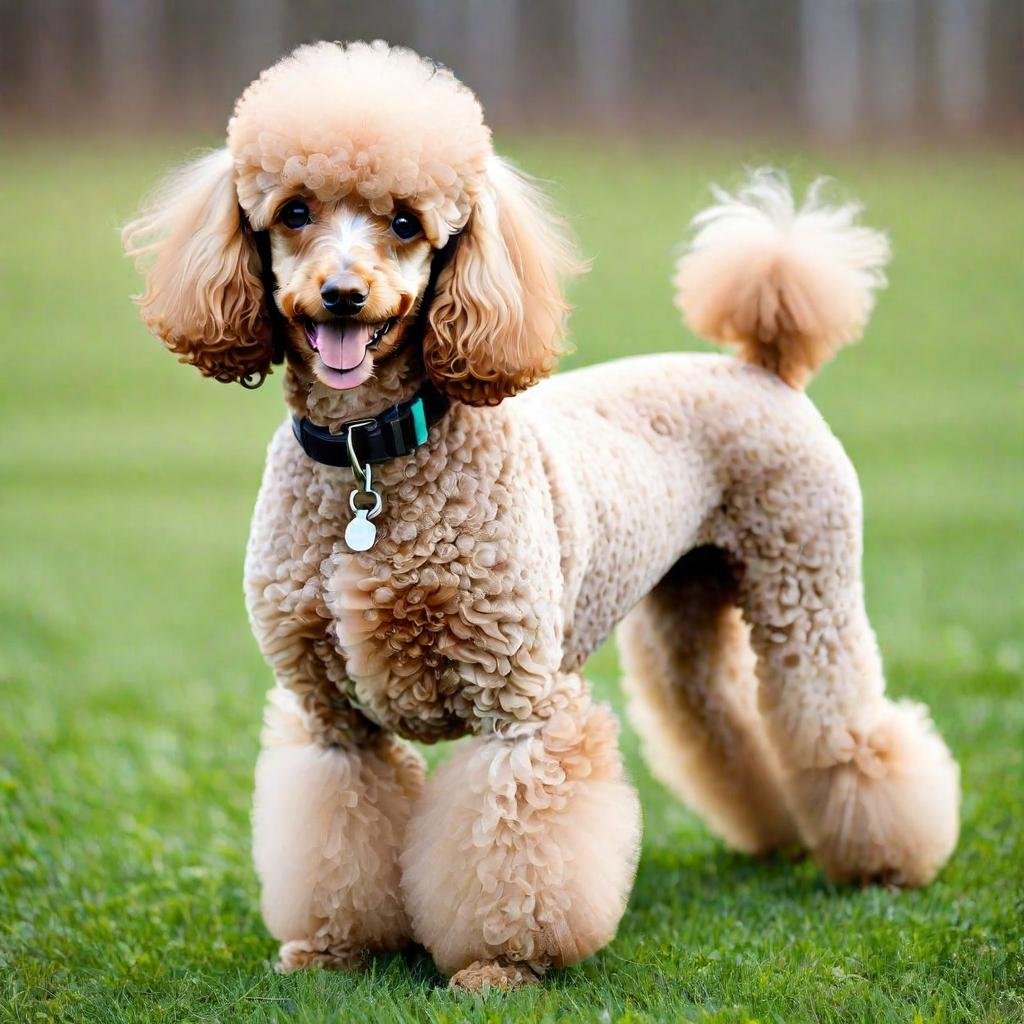
Height
- Miniature Poodle:
- Male: 11-15 inches
- Female: 11-15 inches
- Medium Poodle:
- Male: 15-20 inches
- Female: 15-20 inches
Weight
- Miniature Poodle:
- Male: 10-15 pounds
- Female: 10-15 pounds
- Medium Poodle:
- Male: 20-30 pounds
- Female: 20-30 pounds
Color
Poodles come in a variety of colors including white, black, apricot, chocolate, cream, blue, gray, silver, and red. They may also have markings such as parti-color (two colors) or phantom (specific patterning).
Temperament and Behavior
Poodles are known for their intelligence and trainability, often being ranked among the most intelligent dog breeds. They are active, alert, and highly reactive, making them excellent companions and performance dogs. Poodles are also affectionate and bond closely with their families, enjoying both play time and cuddles. They are friendly and get along well with other pets and children.
Description and Characteristics :
The Poodle has a distinctive curly or ropey coat that is hypoallergenic and sheds very little. His build is athletic and elegant, with a graceful carriage and a flexible gait. The Poodle’s coat can be styled in a variety of ways, from the classic show clip to the simple pet clip. They have a long, straight snout, deep, oval eyes and ears hanging close to the head. Poodles are known for their versatility, excelling as companion animals, working dogs, and performers.
Lifespan
Poodles typically have a lifespan of 12-15 years, though with proper care, some can live even longer.
Unique History
The Poodle originated in Germany, where they were originally bred as water retrievers, specifically for duck hunting. Their name comes from the German word “pudel”, meaning “to splash in water.” Over time, they became popular in France and were refined into the breed we know today, gaining a reputation for their beautiful appearance and versatility.
Poodles were favorites of the French nobility and even performed in circuses due to their intelligence and trainability. Their iconic curly coat, which does not shed much, serves the practical purpose of protecting them in cold waters while hunting.
2. Portuguese Water Dog :
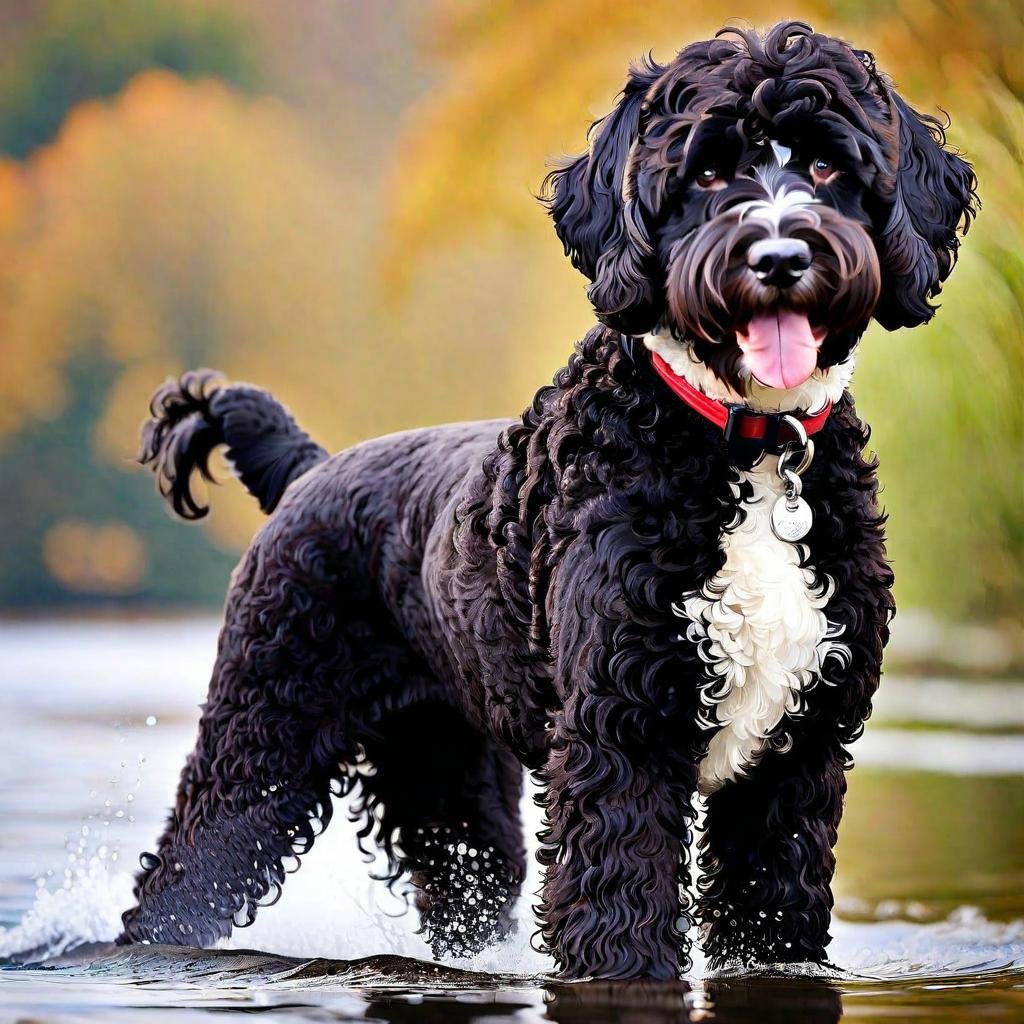
Height
- Male: 20-23 inches
- Female: 17-21 inches
Weight
- Male: 42-60 pounds
- Female: 35-50 pounds
Color
Portuguese Water Dogs come in various colors, including black, white, brown, or combinations of black or brown with white. Some may have markings or parti-color patterns.
Temperament and Behavior
Portuguese Water Dogs are known for their high intelligence, energy and enthusiasm. They are loyal, affectionate and make excellent family pets. These dogs are friendly and usually get along well with children and other animals. They thrive on human interaction and enjoy being a part of family activities. Their working background makes them eager to please and quick to learn, which is beneficial for training. They have a strong work ethic and love to swim and play, making them great companions for active families.
Description and Characteristics
Portuguese Water Dogs have a strong, medium-sized body and are well suited for swimming and water-related activities. They have a curly or wavy coat that is waterproof and hypoallergenic, producing very little shedding. Their eyes are medium-sized and dark in color, and their ears are set high, hanging close to the head. The tail is thick and tapers at the base, often in a ring shape when the dog is active. They have webbed feet, which help in swimming. The coat can be styled as either a “retriever cut” (uniform length all over) or a “lion cut” (shorter on the back and muzzle, with longer hair on the rest of the body).
Lifespan
Portuguese Water Dogs typically live between 10-14 years.
Unique History
The Portuguese Water Dog, or “Cão de Agua” in Portuguese, has a long history as a working dog for fishermen off the coast of Portugal. These dogs were essential crew members, performing tasks such as retrieving lost gear, catching fish in nets, and acting as messengers between boats and the shore. Their excellent swimming abilities and strong work ethic made them invaluable to the fishing industry.
As technology advanced, the breed’s working role diminished, causing their numbers to decline. However, enthusiasts worked to revive the breed, and they gained recognition for their unique skills and companionship qualities. Today, Portuguese Water Dogs are beloved family pets and excel in various dog sports, especially those involving water activities. His intelligence, energy and friendly nature make him popular throughout the world.
3. Labradoodle (Medium) :
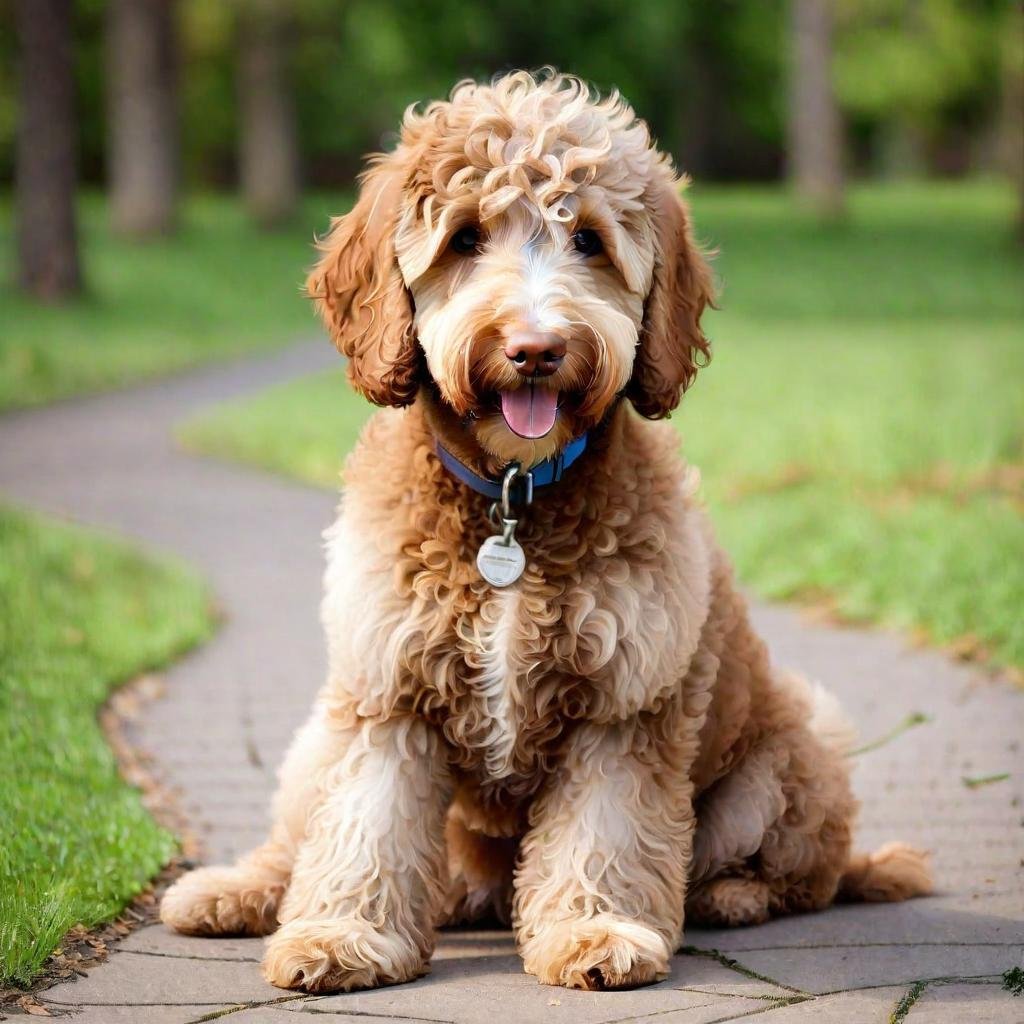
Height
- Male: 17-20 inches
- Female: 17-20 inches
Weight
- Male: 30-45 pounds
- Female: 30-45 pounds
Color
Labradoodles come in a variety of colors, including cream, gold, red, chocolate, black, apricot, and parti-color (two or more colors). Their coats can vary from wavy to curly.
Temperament and Behavior
Labradoodles are known for their friendly, outgoing and affectionate natures. They are extremely sociable and love being around people, making them excellent family pets. They are generally good with children and other pets. Labradoodles are intelligent and eager to please, making them easy to train.They are energetic and playful, requiring regular exercise to keep them happy and healthy. Their gentle and loving behavior makes them great companions and therapy dogs.
Description and Characteristics
Labradoodles have a medium build, often inheriting the athleticism of the Labrador Retriever and the graceful features of the Poodle. Their coat is one of their defining characteristics, being hypoallergenic and low-shedding. Their coat texture can range from wavy to curly, and it requires regular grooming to maintain its health and appearance. They have expressive eyes, often a friendly and intelligent look, and a shapely body. Their ears are medium sized, hanging close to the head, and their tail is usually carried with a slight curvature.
Lifespan
Labradoodles typically live between 12-14 years.
Unique History
The Labradoodle was first bred in the late 1980s by Wally Conron, an Australian breeder, with the aim of creating a guide dog suitable for people with allergies. By crossing the Labrador Retriever with the Poodle, he hoped to combine the Labrador’s excellent temperament and trainability with the Poodle’s hypoallergenic coat.
As a result the Labradoodle gained popularity not only for its low-shedding coat but also for its friendly and intelligent nature. Over the years, Labradoodles have become beloved pets, therapy dogs, and service dogs around the world. Although not officially recognized as a breed by the major kennel clubs, they remain a popular choice for families and individuals looking for a versatile and loving companion.
4. Soft Coated Wheaten Terrier :
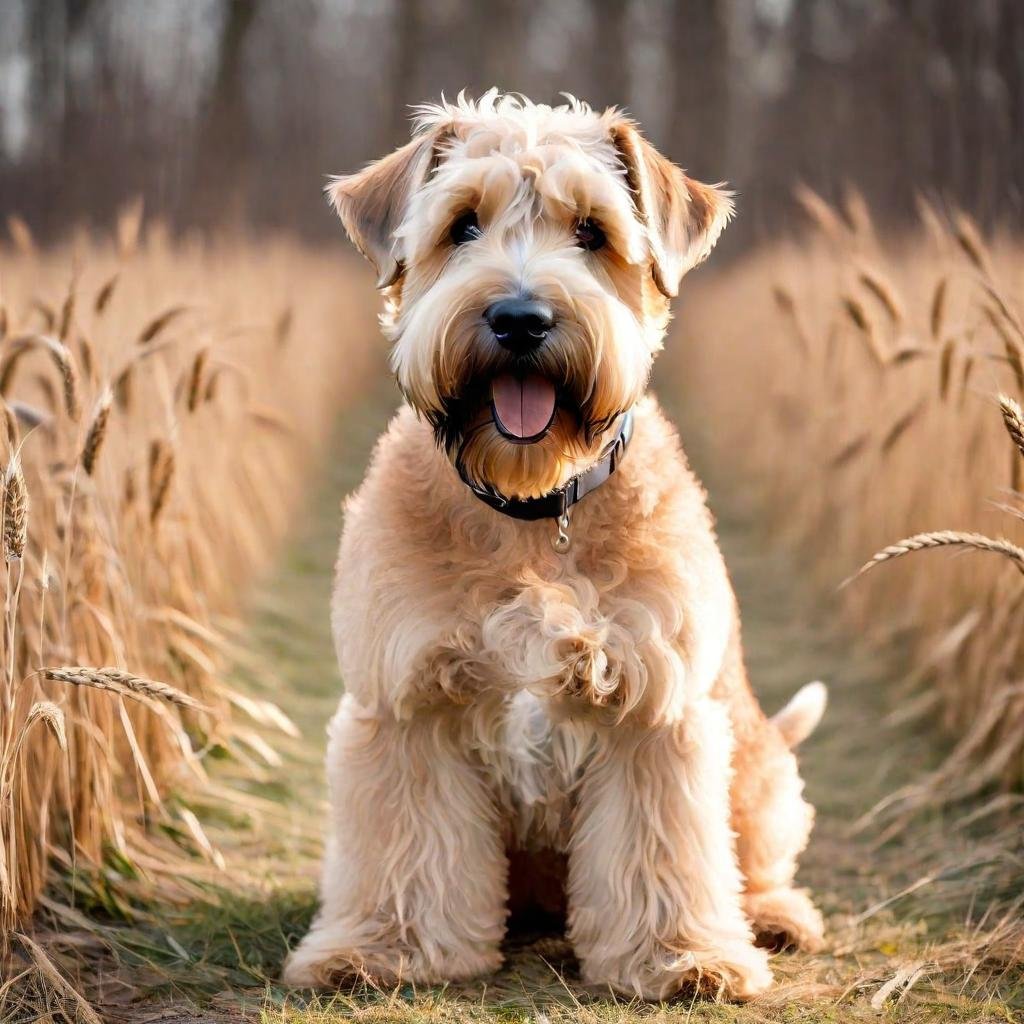
Height
- Male: 18-19 inches
- Female: 17-18 inches
Weight
- Male: 35-40 pounds
- Female: 30-35 pounds
Color
Soft Coated Wheaten Terriers have a distinctive wheaten (pale beige to gold) coat. Puppies are often born with darker coats that lighten as they mature.
Temperament and Behavior
Soft Coated Wheaten Terriers are known for their friendly, happy and playful nature. They are affectionate towards their families and are generally good with children and other pets. These dogs are energetic and require regular exercise to stay healthy and happy. They are also known for their intelligence and curiosity, making them quick learners but sometimes a little stubborn. His cheerful nature and tendency to greet everyone with enthusiasm has earned him the nickname “happy dog.”
Description and Characteristics
Soft Coated Wheaten Terriers have a medium build with a strong, sturdy frame. Their most distinguishing feature is their soft, silky and slightly wavy coat, which is hypoallergenic and sheds very little. Regular grooming is essential to keep their coat in good condition and prevent matting. They have an oblong head with a defined stop, a black nose and dark, almond-shaped eyes that give them a lively expression. Their ears are medium sized and tilted forward, and their tail is usually docked and held straight.
Lifespan
Soft Coated Wheaten Terriers typically live between 12-15 years.
Unique History
The Soft Coated Wheaten Terrier originates from Ireland, where it has been known for over 200 years. Initially bred as an all-purpose farm dog, they were used for herding livestock, hunting vermin, and guarding farmland. Despite their long history, they were not recognized as a distinct breed until the mid-20th century. The Irish Kennel Club officially recognized the breed in 1937, followed by the British Kennel Club in 1943.
They were brought to the United States in the 1940s and received American Kennel Club recognition in 1973. Today, Soft Coated Wheaten Terriers are beloved for their cheerful personality, versatility, and beautiful coat, making them popular pets and companions around the world.
5. Lagotto Romagnolo :

Height
- Male: 17-19 inches
- Female: 16-18 inches
Weight
- Male: 28-35 pounds
- Female: 24-32 pounds
Color
Lagotto Romagnolos come in various colors, including off-white, white with brown or orange patches, brown roan, solid brown (in different shades), or orange. Some dogs may also have a mask.
Temperament and Behavior
The Lagotto Romagnolo is known for being affectionate, loyal, and highly intelligent. They are curious and alert, which makes them excellent watchdogs. These dogs are friendly and generally good with children and other pets. Their strong desire to please makes them easy to train. Lagottos are energetic and require regular physical and mental exercise to stay happy. Their keen sense of smell, which was originally developed for truffle hunting, also makes them excellent at scent work and other dog sports.
Description and Characteristics
The Lagotto Romagnolo has a sturdy, medium-sized build, designed to work in water and on land. Their most distinctive feature is their dense, curly coat, which is waterproof and hypoallergenic, shedding very little. The coat can be woolly and requires regular grooming to prevent matting. They have a broad head, slightly rounded skull and a proportional body with a pronounced stop.Their eyes are large and round, usually in shades that match their coat color, giving them an expressive, intelligent look. Their ears are medium sized, triangular, and hang close to the head. The tail is thick and tapers at the base, often with a light curl.
Lifespan
Lagotto Romagnolos typically live between 14-16 years.
Unique History
The Lagotto Romagnolo is an ancient breed from the Romagna region of Italy, dating back to at least the Renaissance. Originally bred as water retrievers, they were used to hunt waterfowl in the marshlands of Romagna. As these wetlands dried up and were transformed into agricultural land in the 19th century, the Lagotto were repurposed for truffle hunting, a task at which they excel due to their keen sense of smell and strong work ethic.
Their name, “Lagotto”, derives from the Italian word “lago”, meaning “lake”, reflecting their historical role as water dogs. The breed’s unique skills and friendly nature have made them popular as both working dogs and pets. They were officially recognized by the Italian Kennel Club in 1991 and by the American Kennel Club in 2015. Today, Lagotto Romagnolos are admired for their versatility, affectionate nature, and hypoallergenic coat.
6. Irish Water Spaniel :
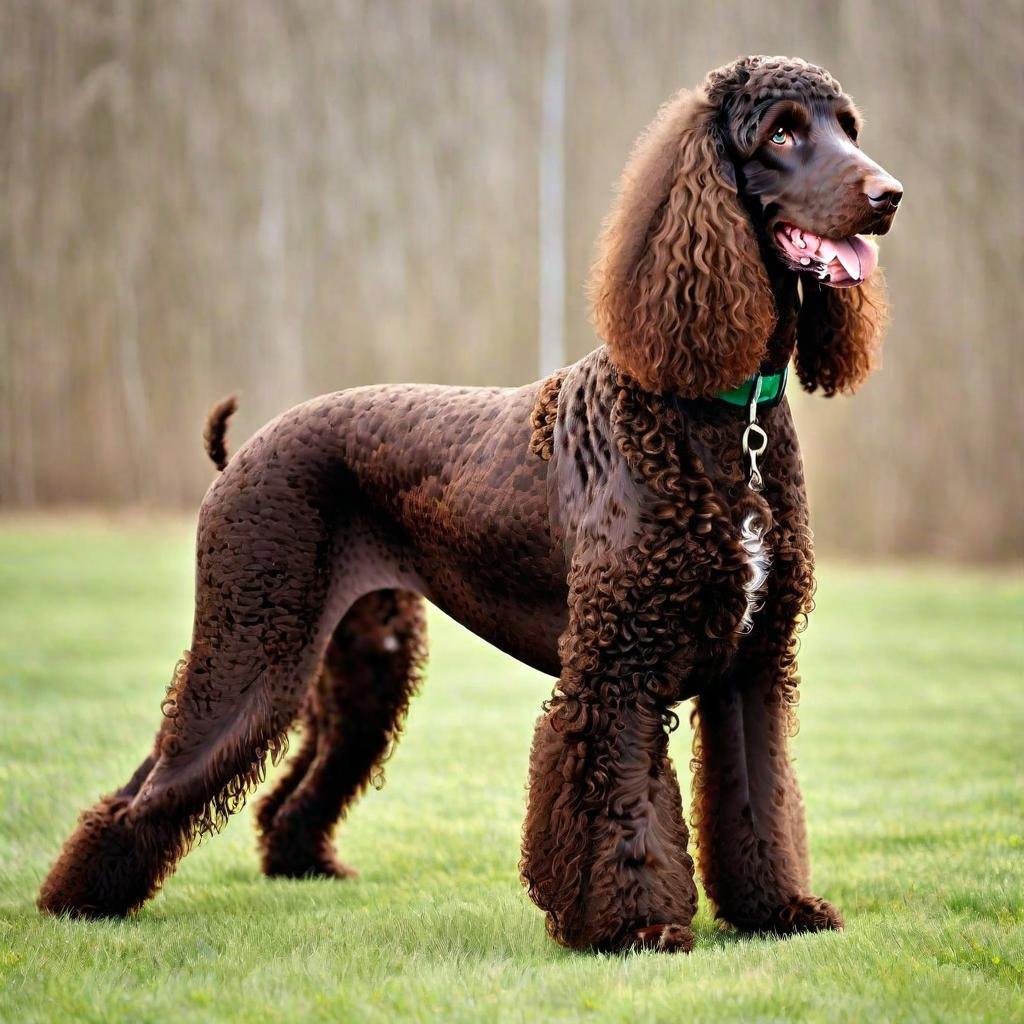
Height
- Male: 22-24 inches
- Female: 21-23 inches
Weight
- Male: 55-68 pounds
- Female: 45-58 pounds
Color
Irish Water Spaniels have a distinctive solid liver (rich dark brown) color.
Temperament and Behavior
Irish Water Spaniels are known for their intelligence, playful nature, and strong work ethic. They are friendly and affectionate towards their families but can be reserved towards strangers. These dogs are energetic and require regular exercise and mental stimulation. They are known for their excellent swimming abilities and love of water.Irish Water Spaniels also get along well with children and other pets, making them versatile family companions. Their independent and sometimes stubborn nature can be a challenge, but with consistent training and socialization, they are loyal and responsive.
Description and Characteristics
The Irish Water Spaniel is a medium to large breed with a unique appearance. They have a dense, curly coat that is water resistant, providing protection in cold waters. Their coat sheds very little but requires regular grooming to prevent tangles. One of their most distinctive features is their “rat tail” – a tail that is thick and covered in curly hair at the base but tapers to a smooth tip. They have a broad head with a long, square muzzle, and their eyes are dark and almond-shaped, giving them an intelligent and alert expression. Their ears are long, covered with curly hair and hang close to the head.
Lifespan
Irish Water Spaniels typically live between 10-12 years.
Unique History
The Irish Water Spaniel has a long history, believed to have originated in Ireland at least in the 7th century. They were bred to be versatile hunting dogs, specifically for retrieving prey from water. Their exact ancestry is unknown, but it is believed that they are a mix of several water dog breeds. The breed was standardized in the 19th century by Justin McCarthy of Dublin, who is credited with developing the modern Irish Water Spaniel.
They became popular in both Ireland and England for their hunting skills and unique appearance. The breed was recognized by the American Kennel Club in 1884. Today, Irish Water Spaniels are known for their outstanding abilities in waterfowl hunting, agility and obedience competitions. They are relatively rare, but loved for their unique appearance, intelligence, and affectionate nature.
7. Kerry Blue Terrier :
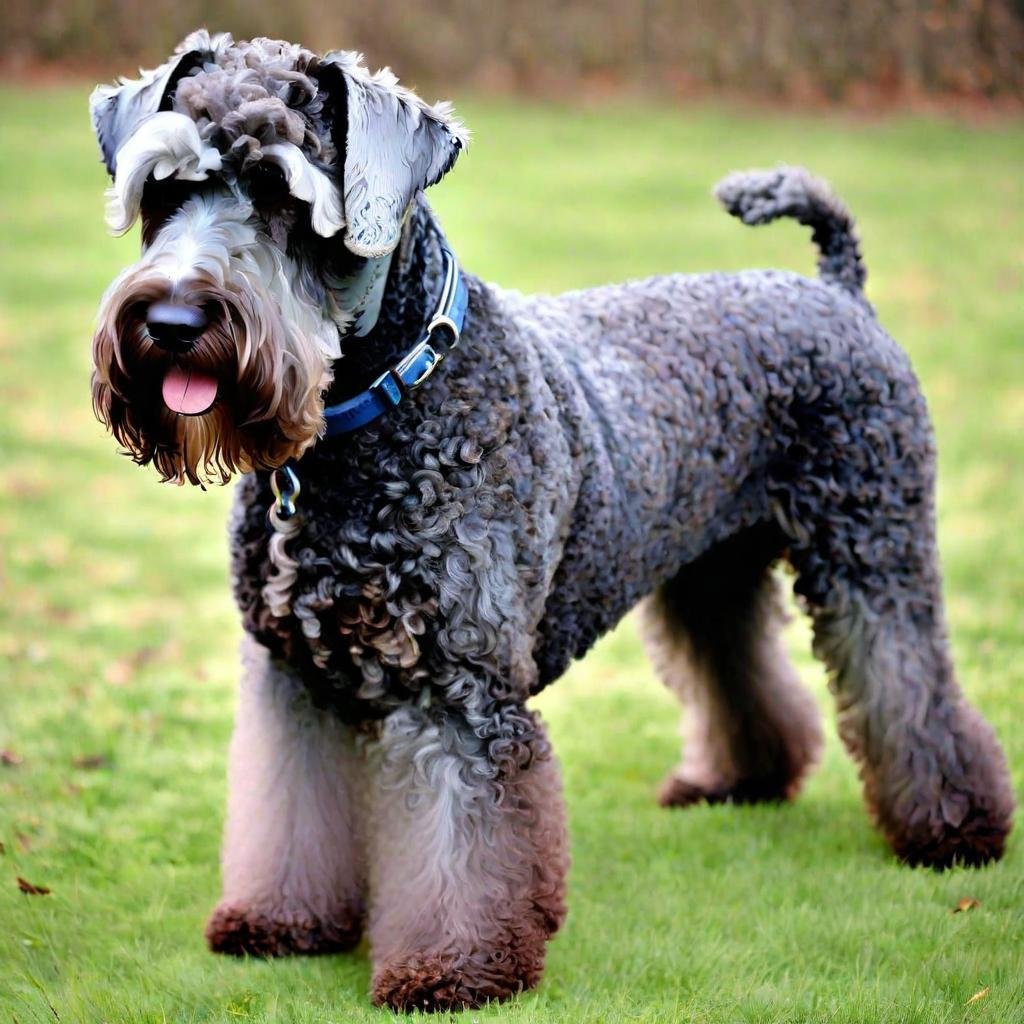
Height
- Male: 18-19 inches
- Female: 17-18 inches
Weight
- Male: 33-40 pounds
- Female: 30-35 pounds
Color
Kerry Blue Terriers have a unique coat that starts out black and gradually changes to a blue-gray color by the age of 2 years. They can also have shades of blue, ranging from light slate to deep, dark blue.
Temperament and Behavior
Kerry Blue Terriers are known for their intelligence, loyalty, and playful nature. They are affectionate towards their families but can be reserved with strangers. These dogs are energetic and require regular exercise and mental stimulation to keep them happy. They are enthusiastic and independent thinkers, who with patience and persistence can make training challenging but rewarding. Kerry Blues are good with children and can also live with other pets if properly socialized. They have a strong prey drive, so supervision is recommended around smaller animals.
Description and Characteristics
Kerry Blue Terriers have a compact and muscular build, with a deep chest and strong legs. They have a distinctive soft, wavy coat that is hypoallergenic and sheds very little. Their head is long and balanced, the skull is flat and the block is moderate. Their eyes are small, black and almond shaped, giving them a deep and intelligent expression.Their ears are V-shaped, folded forward close to the head. The tail is held high and straight. Kerry Blues are known for their graceful gait and confident demeanor.
Lifespan
Kerry Blue Terriers typically live between 12-15 years.
Unique History
Kerry Blue Terriers come from County Kerry, Ireland, where they were originally bred as versatile farm dogs. They were used to hunt small game, herd livestock, and protect property. The exact ancestry of the breed is unclear, but it is believed to be a mix of several terrier breeds and possibly some Portuguese water dog ancestry.
Kerry Blue Terriers gained popularity in the early 20th century and were recognized by the Irish Kennel Club in 1922 and the American Kennel Club in 1924. They became known for their skills in rodent control and later gained popularity as show dogs and companions. Today, Kerry Blue Terriers are valued for their unique coats, feisty personalities, and loyalty to their families.
8. Spanish Water Dog :
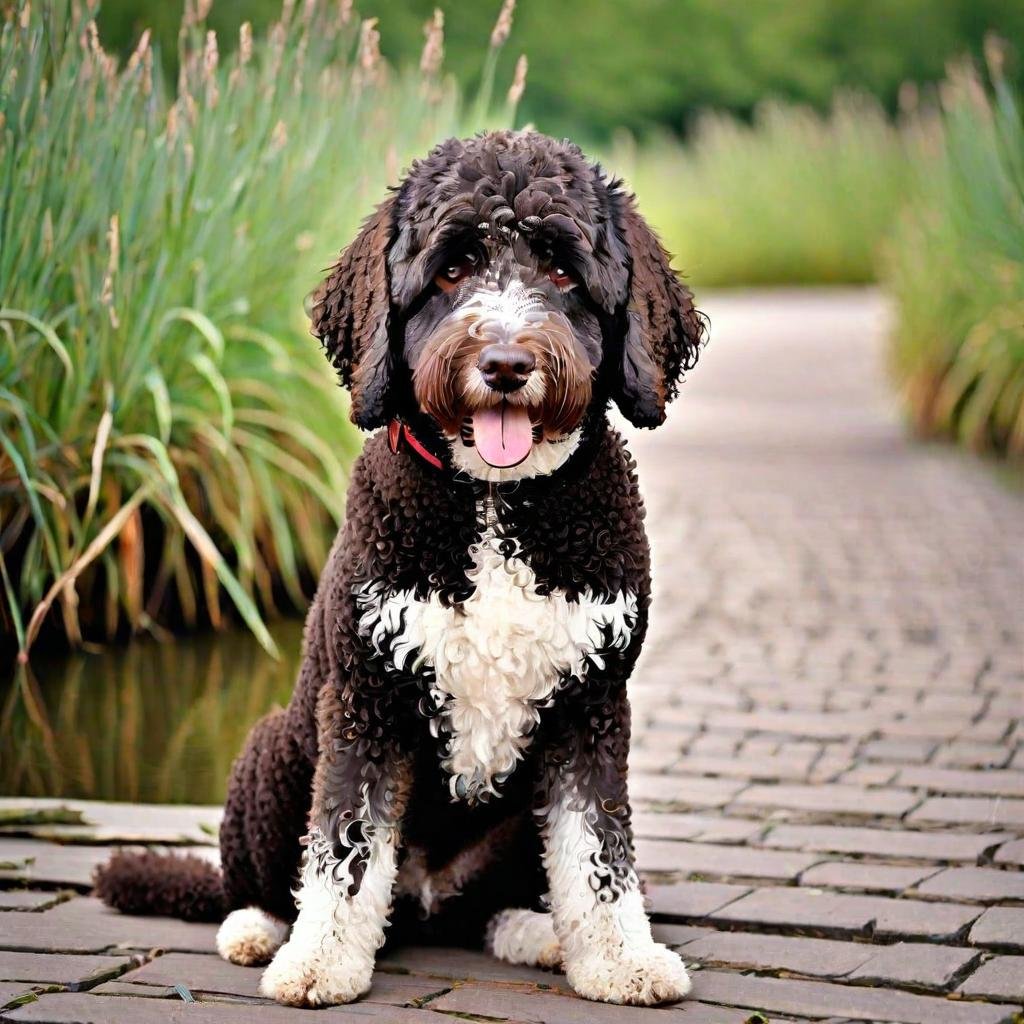
Height
- Male: 17-20 inches
- Female: 15-18 inches
Weight
- Male: 40-49 pounds
- Female: 31-40 pounds
Color
Spanish Water Dogs come in various solid colors, including black, brown, beige, and white. They can also have bi-color or tri-color patterns.
Temperament and Behavior
Spanish Water Dogs are known for their intelligence, athleticism and adaptability. They are highly trainable and eager to please, which makes them excellent working dogs and companions. These dogs are affectionate and loyal to their families, often forming strong bonds with their owners. They are also good with children and other pets when properly socialized. Spanish Water Dogs are energetic and require regular exercise and mental stimulation to avoid boredom. They excel in activities such as agility, obedience, herding and water sports, which shows their versatile nature.
Description and Characteristics
Spanish Water Dogs are medium-sized, muscular, with a distinctive curly or wavy coat that is waterproof and hypoallergenic. Their coat can be roped or cut short for easier maintenance. Their head is broad and slightly rounded, with a moderate barring. They have expressive eyes that are usually dark in color and almond shaped, giving them an alert and intelligent expression. Their ears are set at medium height and hang close to the head. The tail is usually docked to a short length or left natural and carried with a slight twist.
Lifespan
Spanish Water Dogs typically live between 12-14 years.
Unique History
The Spanish Water Dog, known as the “Perro de Agua Español” in Spanish, has a history going back centuries in Spain. They were originally bred as versatile working dogs for herding livestock, guarding property, and retrieving items from water. Their waterproof coat and strong swimming abilities made them indispensable to Spanish fishermen and shepherds.
The breed was almost brought to extinction during the Spanish Civil War, but was revived by enthusiasts who appreciated their unique qualities. The Spanish Water Dog was recognized by the Spanish Kennel Club in 1985 and later by international kennel clubs, including the American Kennel Club, in 2015. Today, they are valued for their intelligence, versatility, and hypoallergenic coat, making them popular as both working dogs and beloved companions around the world.
9. Barbet :
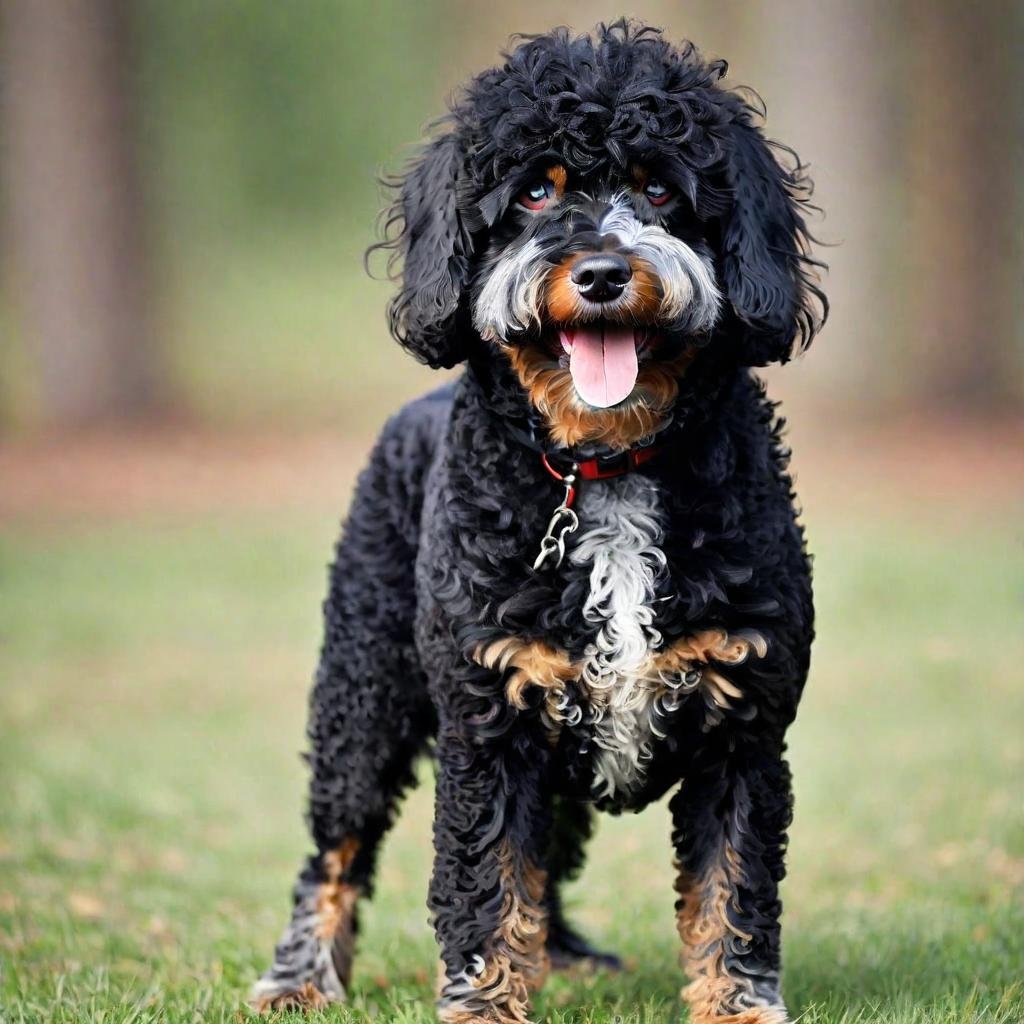
Height
- Male: 21-24.5 inches
- Female: 19-22.5 inches
Weight
- Male: 37-62 pounds
- Female: 33-55 pounds
Color
Barbets come in a variety of solid colors, including black, brown, fawn, gray, and white. They can also have markings in various shades or patterns.
Temperament and Behavior
Barbets are known for their friendly, outgoing and affectionate nature. They are intelligent and trainable, making them versatile working dogs and excellent family companions. These dogs are loyal and form strong bonds with their families, often seeking attention and affection. When properly socialized from a young age they are good with children and other pets. When properly socialized from a young age. Barbets are active and require regular exercise to keep them physically and mentally stimulated. They excel at activities such as retrieving, water play, obedience and agility.
Description and Characteristics
Barbets are medium-sized, athletic with a curly, waterproof coat that is hypoallergenic and sheds minimally. Their coat can be clipped short for easy maintenance or left natural with cords forming naturally over time. They have a broad head with a pronounced stop and a strong, slightly arched neck. Their eyes are medium sizeThe ears are set at medium height and hang close to the head, covered with curls. The tail is usually parted at medium length or left natural and carried with a slight curl.
Lifespan
Barbets typically live between 12-15 years.
Unique History
The Barbet is an ancient breed that originated in France, where it was originally bred as a versatile water dog. Barbets were prized for their excellent swimming abilities and were used to retrieve waterfowl, working with hunters and fishermen. The breed was almost driven to extinction during the 20th century, but was revived by dedicated breed enthusiasts who appreciated its unique qualities.
The Barbet gained recognition by the French Kennel Club in 1954 and has since gained popularity as a versatile companion and working dog. Today, Barbets are admired for their friendly nature, intelligence, and hypoallergenic coat, making them suitable for a variety of roles including medical work, search and rescue, and competitive dog sports.
10. Bergamasco Sheepdog :
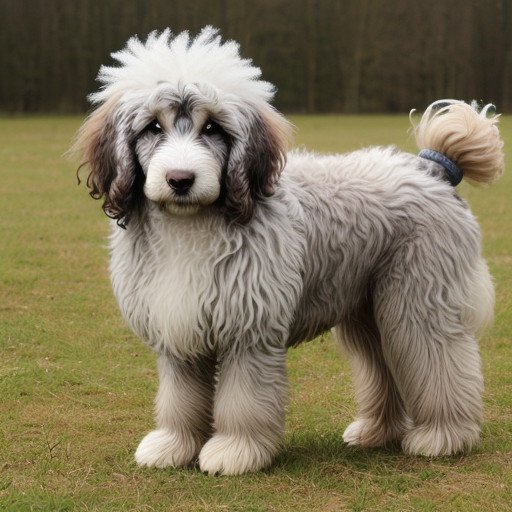
Height
- Male: 23.5-24.5 inches
- Female: 22-23.5 inches
Weight
- Male: 70-84 pounds
- Female: 57-71 pounds
Color
Bergamasco Sheepdogs typically have a solid gray or black coat. As they mature, their coat develops unique felted mats or flocks that protect them from weather and predators.
Temperament and Behavior
Bergamasco Sheepdogs are known for their intelligence, loyalty, and calm demeanor. They are devoted to their families and are gentle and affectionate towards children. These dogs are naturally protective and wary of strangers, making them excellent watchdogs.They are also highly adaptable and can thrive in a variety of living environments, including apartments, as long as they get adequate exercise and mental stimulation. Bergamascos are independent thinkers but respond well to consistent training and positive reinforcement. They have a strong herding instinct and may try to herd children or other pets.
Description and Characteristics
The Bergamasco Sheepdog has a distinctive appearance due to their unique coat, which forms flocks or mats that cover their bodies from head to tail. These mats are made of three types of hair: wool, goat-like and outer hair. Mats do not form naturally at birth but develop in the first year and continue to grow throughout life. Their head is large and square, with a broad skull and strong jaws. They have dark, almond-shaped eyes that convey intelligence and alertness. Their ears are of medium size, triangular and hanging. The tail is long and hangs down with a slight curvature.
Lifespan
Bergamasco Sheepdogs typically live between 13-15 years.
Unique History
The Bergamasco Sheepdog, or “Cane da Pastore Bergamasco” in Italian, is an ancient breed that originated in the Italian Alps, specifically in the area of Bergamo. They were developed as herding dogs, used primarily for herding and guarding sheep. The breed’s unique coat served to protect them from the harsh mountain climate and predators.
Despite its long history, the Bergamasco Sheepdog suffered a decline in numbers after World War II, leading to efforts to preserve the breed. Their distinctive coat and versatile working abilities have gained recognition and admiration among dog enthusiasts around the world. Today, Bergamascos are valued as loyal companions and working dogs, excelling in herding trials, obedience and other dog sports.
Considerations When Choosing a Non-Shedding Dog ;
When choosing a medium dog breed that doesn’t shed, there are several unique considerations to keep in mind. First and foremost, non-shedding breeds like the medium-sized Poodle or Soft Coated Wheaten Terrier often have coats that require regular grooming to prevent matting and maintain their hypoallergenic properties. This grooming routine not only keeps their appearance clean but also promotes their overall health and comfort.
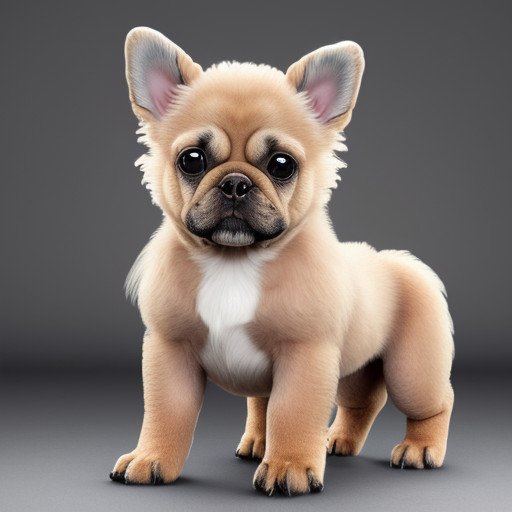
Another factor is their energy levels and exercise needs. Many non-shedding breeds, such as the Kerry Blue Terrier or the Portuguese Water Dog, are active and require regular physical activity to stay happy and healthy. Daily walks, playtime, and mental stimulation are essential to prevent boredom and ensure they remain well-behaved companions.
Additionally, consider their temperament and compatibility with your lifestyle. Non-shedding breeds are often known for their intelligence, loyalty, and trainability, making them excellent choices for families or individuals looking for a dedicated companion. It is important to research the specific characteristics of each breed and consult breeders or rescue organizations to find a dog that matches your living conditions and activity level.
Choosing a non-shedding medium-sized dog involves a commitment to care and exercise, but the rewards of having a loving and low-allergy companion can be worth the effort.
Grooming Tips for Non-Shedding Dogs ;
Grooming Non-shedding medium dog breeds, such as the Lagotto Romagnolo or Barbet, require regular attention to maintain their hypoallergenic coat and overall health. Start brushing their curly or wavy hair every few days to prevent tangles and remove loose hair. Use a smooth brush or comb designed for their coat type to gently work out tangles and knots.

Regular bathing is essential to keep their coat clean and odor free. Use a mild dog shampoo recommended by your veterinarian and be sure to rinse thoroughly to prevent skin irritation. After bathing, towel dry your dog and allow their coat to air dry naturally or use a blow dryer on a low heat setting.
Trim their nails monthly to prevent overgrowth and discomfort. Use a pet-specific nail trimmer and avoid cutting too close, which can cause bleeding and pain.
Check their ears weekly for signs of wax accumulation or infection. Clean their ears with a veterinarian-recommended ear cleaner and a cotton ball, being careful not to force any more dirt into the ear canal.
Finally, visit a professional groomer regularly to trim their coat and ensure overall cleanliness. With proper grooming care, your non-shedding medium-sized dog will remain healthy, comfortable, and best of all, looking his best.
** Conclusion **
Choosing a medium breed dog, such as the Portuguese Water Dog or Kerry Blue Terrier, that does not shed hair can be a beneficial decision for you and your family. These dogs not only bring joy and companionship but also offer the benefit of a hypoallergenic coat, making them suitable for allergy sufferers.

Remember, raising a dog without shedding requires a commitment to regular care and maintenance. By brushing their coat regularly, bathing them with gentle products as needed, and trimming nails and cleaning ears, you can ensure that your dog stays healthy and comfortable.
Non-shedding breeds are often known for their intelligence, loyalty, and energetic personalities. They thrive on companionship and regular exercise, so incorporating daily walks and playtime into their routine is essential to their well-being.
Whether you choose a playful Lagotto Romagnolo or a spirited Barbet, each breed offers unique traits and qualities that can enrich your life. With proper care and attention, your non-shedding medium-sized dog will become a beloved member of your family, providing love, laughter, and lasting memories for years to come.
Additional Resources ;
When seeking more information about medium-sized dog breeds that do not shed hair, consider exploring additional resources to make an informed decision for your furry companion. Start by visiting reputable breed-specific websites and forums where owners share their experiences and advice.These platforms often provide information about care routines, health considerations, and the overall temperament of various non-shedding breeds such as the Soft Coated Wheaten Terrier or the Spanish Water Dog.
Local breed clubs and rescue organizations are invaluable resources for connecting with breeders or adopting dogs in need of a loving home. They can offer guidance on breed-specific traits, training tips, and potential health concerns.
Consulting with a veterinarian who specializes in companion animals can provide tailored advice on caring for non-shedding dogs, including nutrition, exercise needs, and preventive health care.
Books and publications focusing on dog breeds and care can also provide comprehensive insight into the selection and care of non-shedding medium-sized dogs. Find titles that cover grooming techniques, training methods, and breed-specific quirks to enhance your understanding and bond with your new canine companion.
You might be interested in reading this post as well Calm Small Dog Breeds That Don’t Shed
“Hypoallergenic Companions: Medium Dog Breeds That Won’t Leave Fur Behind” ** Introduction ** Are you dreaming of a furry friend but worried about hair all over your house? you’re not alone! Many potential pet owners love dogs but fear the constant dog shedding. Thankfully, there are plenty of medium-sized dog breeds that don’t shed hair,…
You can read this post https://tomeshnews.co.in/family-kid-friendly-best-dog-breeds/?amp=1
Are non-shedding dogs truly hypoallergenic?
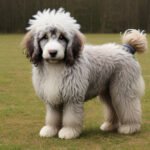
Non-shedding dogs produce less dander and shed minimal fur, making them suitable for some allergy sufferers. However, individual reactions can vary.
Do non-shedding dogs require less grooming than shedding breeds?
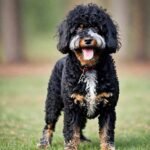
Non-shedding dogs require regular grooming to prevent matting and maintain coat health, although they don’t leave hair all over the house.
Can non-shedding dogs be left alone for long periods?
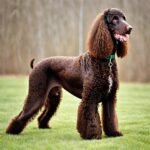
Non-shedding dogs, like any breed, prefer companionship and may not tolerate being alone for extended periods well.
Are there non-shedding dogs suitable for families with children?
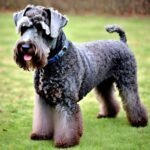
Yes, many non-shedding medium-sized breeds have gentle temperaments and are good with children when properly socialized.
Do non-shedding dogs have specific health concerns?
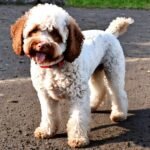
Some non-shedding breeds may be prone to certain health issues, so it’s important to research breed-specific conditions and choose a reputable breeder.
Are non-shedding dogs more expensive to care for?
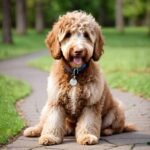
Non-shedding dogs may require more grooming expenses, high-quality food, and regular veterinary check-ups, potentially increasing overall care costs.
